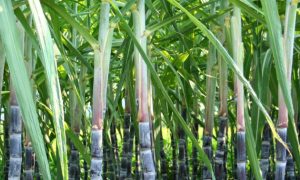Africa’s growing grain crisis: Reliance on Russian wheat escalates

Africa’s reliance on Russian wheat is growing as the continent faces low domestic production and increasing demand. Countries like Benin, which depends on wheat imports by 99.8%, are significantly affected by price hikes and supply uncertainties due to Russia’s war with Ukraine. As Russian wheat production declines and prices rise, alternative solutions, such as banana flour, are emerging, especially in West African nations facing food crises. This issue is being addressed at the “West and Central Africa Wheat Summit 2024” in Abuja, Nigeria.
Africa is becoming a significant market for Russian grain, upon which many countries on the continent have grown dependent, even those that had not previously consumed wheat.
Wheat production in Africa is relatively low, so most countries rely on imports to satisfy demand.
Benin relies on it by as much as 99.8%. This small country, by African standards, is a notable producer of wheat flour in this region, exporting it to Niger, Burkina Faso, France, and Germany.
Russia’s aggression against Ukraine has made wheat supplies uncertain, and the price has increased by as much as 30% over the year.
Many farmers in Benin have returned to ancient traditions and started producing flour from bananas. This trend is also evident in Togo, Liberia, and other West African countries experiencing the most severe food crisis in history. In some countries, this crisis is caused by Islamist uprisings forcing millions of farmers to abandon their lands, while in others, it is caused by floods and droughts, with the war in Ukraine further exacerbating the situation.
Russia’s “wheat yoke”
However, Egypt is the largest African recipient of Russian wheat, having purchased 1.4 million tonnes in September. Russia also sells wheat to Algeria, Mozambique, Tunisia, Tanzania, Kenya, Côte d’Ivoire, Ghana, Namibia and Botswana, countries whose cuisine traditionally relies on maize .
For Kenya, Russia has become the seventh largest supplier of this grain, whereas last year, it was ninth. Moroccan buyers have resumed purchasing Russian wheat after a two-year hiatus under pressure from local millers. Moscow has now become one of its largest suppliers. This North African country will purchase more Russian wheat this season than French because France, its main supplier, is expected to export much less due to rain damage to crops.
Cheaper Russian grain
Africa switched to Russian grain this year primarily because it was cheaper than Ukrainian grain. At the beginning of October, Russian wheat was priced at €230 per tonne in the Egyptian port of Alexandria, compared to €239 for Ukrainian wheat. Ukraine has focused on markets other than Africa and is now exporting wheat to countries including Indonesia and Vietnam.
However, next year could be much worse for Russian wheat. Russian crop yields will drop to their lowest level in 11 years by 2025. Russia, the world’s largest wheat exporter, has been hit by a severe drought threatening its winter crops. According to Reuters, wheat production in Russia has been declining since reaching a record 158 million tonnes in 2022. Last year, yields fell to 147 million tonnes, and this year’s forecast has been lowered to 131 million tonnes.
Problem for African countries
African countries will keenly feel the shortage. According to the President of the African Development Bank (AfDB), Akinwumi Adesina, in African countries unprepared for a food crisis, the shortfall in wheat, whose demand on the continent has risen to over 75 million tonnes, could lead to serious social unrest.
Agricultural market experts are seeking solutions to this crisis at the ongoing “West and Central Africa Wheat Summit 2024” in Abuja, Nigeria.
Source Link : https://www.msn.com/en-ie/money/other/africa-s-growing-grain-crisis-reliance-on-russian-wheat-escalates/ar-AA1se8Qz
















